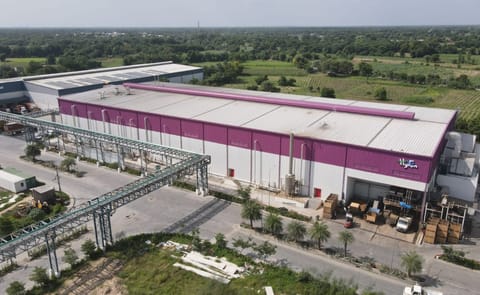Wyma: Moving from reactive to preventative maintenance
主标签
Wyma: Moving from reactive to preventative maintenance

Investing in pack-house equipment usually means a notable cash outlay for any (potato) grower, packer, or processor.
Making the effort to look after your equipment with regular care and maintenance will extend the life of your investment, saving you time and money. Equipment manufacturer Wyma offers suggestions for their specific equipment that can easily be extrapolated to many types of equipment...
The problem for many pack-houses is that they are stuck in a reactive maintenance loop. Research has shown that up to 80 percent of time dedicated to maintenance is spent addressing issues as they arise1, with just 20 percent spent on preventing problems before they occur.
An ideal maintenance schedule should aim to flip that ratio; by dedicating 80 percent of your time to preventative maintenance, just 20 percent will be required for reactive.
Regular cleaning and maintenance allow you to find and solve problems early, potentially preventing expensive, time-consuming downtime and repairs. A preventative maintenance schedule will keep things running smoothly and save costly downtime.
What needs servicing?
The short answer to this question is easy – everything probably needs some level of servicing. What complicates matters, however, is how much servicing each piece of equipment in your line needs.
Make a list of all of your equipment and break each piece down into a list of service tasks for each machine. Include everything from regular, daily activities such as cleaning, to less frequent tasks like bearing or belt replacement.
If you are unsure, speak to equipment operators and look through user manuals. Manufacturers should provide a full list of service tasks, including when and how often the tasks need to be done, and it helps to split the tasks into 'timing' lists – daily, weekly, monthly, or annually, for example.
Who can do it?
Obviously, it is important to have well-trained staff on-site for day-to-day maintenance; those who regularly use the equipment will know if it is running correctly and troubleshoot effectively.
When setting your maintenance schedule, make a list of who can do each task, when they are available, and at what point they should be performing their maintenance.
For more intensive maintenance, Wyma-trained service technicians are available to ensure your equipment is getting the attention it needs from the people who know it best.
By including an off-season Wyma service into your maintenance schedule, you can be confident your investment is maintained by experts and will continue to perform at the optimum level.
What tools/parts do they need?
Service technicians will have the common tools they need but if there are specialized tasks you need them to do, make sure the tools and equipment they need are on hand.
Prepare a breakdown for your technicians so they can organize the parts and tools they need before they start.
Many service jobs involve replacing worn parts, so it's important to have a store of Wyma Genuine spare parts readily available so tasks are completed efficiently.
Keep track with checklists
Creating a preventative maintenance plan is only half the work – you still have to make sure the plan is followed. Creating categorized checklists (daily, weekly, etc) is a great way to maintain oversight of your maintenance.
Consider implementing a system to confirm aspects such as:
It's also much easier to incorporate any new equipment into an already existing plan, so when the time comes to replace some (or all) of your processing line, it's simple to keep your investment in optimal condition.
Making the effort to look after your equipment with regular care and maintenance will extend the life of your investment, saving you time and money. Equipment manufacturer Wyma offers suggestions for their specific equipment that can easily be extrapolated to many types of equipment...
The problem for many pack-houses is that they are stuck in a reactive maintenance loop. Research has shown that up to 80 percent of time dedicated to maintenance is spent addressing issues as they arise1, with just 20 percent spent on preventing problems before they occur.
An ideal maintenance schedule should aim to flip that ratio; by dedicating 80 percent of your time to preventative maintenance, just 20 percent will be required for reactive.
Regular cleaning and maintenance allow you to find and solve problems early, potentially preventing expensive, time-consuming downtime and repairs. A preventative maintenance schedule will keep things running smoothly and save costly downtime.
What needs servicing?
The short answer to this question is easy – everything probably needs some level of servicing. What complicates matters, however, is how much servicing each piece of equipment in your line needs.
Make a list of all of your equipment and break each piece down into a list of service tasks for each machine. Include everything from regular, daily activities such as cleaning, to less frequent tasks like bearing or belt replacement.
If you are unsure, speak to equipment operators and look through user manuals. Manufacturers should provide a full list of service tasks, including when and how often the tasks need to be done, and it helps to split the tasks into 'timing' lists – daily, weekly, monthly, or annually, for example.
Who can do it?
Obviously, it is important to have well-trained staff on-site for day-to-day maintenance; those who regularly use the equipment will know if it is running correctly and troubleshoot effectively.
When setting your maintenance schedule, make a list of who can do each task, when they are available, and at what point they should be performing their maintenance.
For more intensive maintenance, Wyma-trained service technicians are available to ensure your equipment is getting the attention it needs from the people who know it best.
By including an off-season Wyma service into your maintenance schedule, you can be confident your investment is maintained by experts and will continue to perform at the optimum level.
What tools/parts do they need?
Service technicians will have the common tools they need but if there are specialized tasks you need them to do, make sure the tools and equipment they need are on hand.
Prepare a breakdown for your technicians so they can organize the parts and tools they need before they start.
Many service jobs involve replacing worn parts, so it's important to have a store of Wyma Genuine spare parts readily available so tasks are completed efficiently.
Keep track with checklists
Creating a preventative maintenance plan is only half the work – you still have to make sure the plan is followed. Creating categorized checklists (daily, weekly, etc) is a great way to maintain oversight of your maintenance.
Consider implementing a system to confirm aspects such as:
- Description of task(s)
- Date of completion
- Technician responsible for task(s)
- Important notes
It's also much easier to incorporate any new equipment into an already existing plan, so when the time comes to replace some (or all) of your processing line, it's simple to keep your investment in optimal condition.
Like to receive news like this by email? Join and Subscribe!
Get the latest potato industry news straight to your WhatsApp. Join the PotatoPro WhatsApp Community!
精选企业
Sponsored Content
Sponsored Content
Sponsored Content
Sponsored Content









